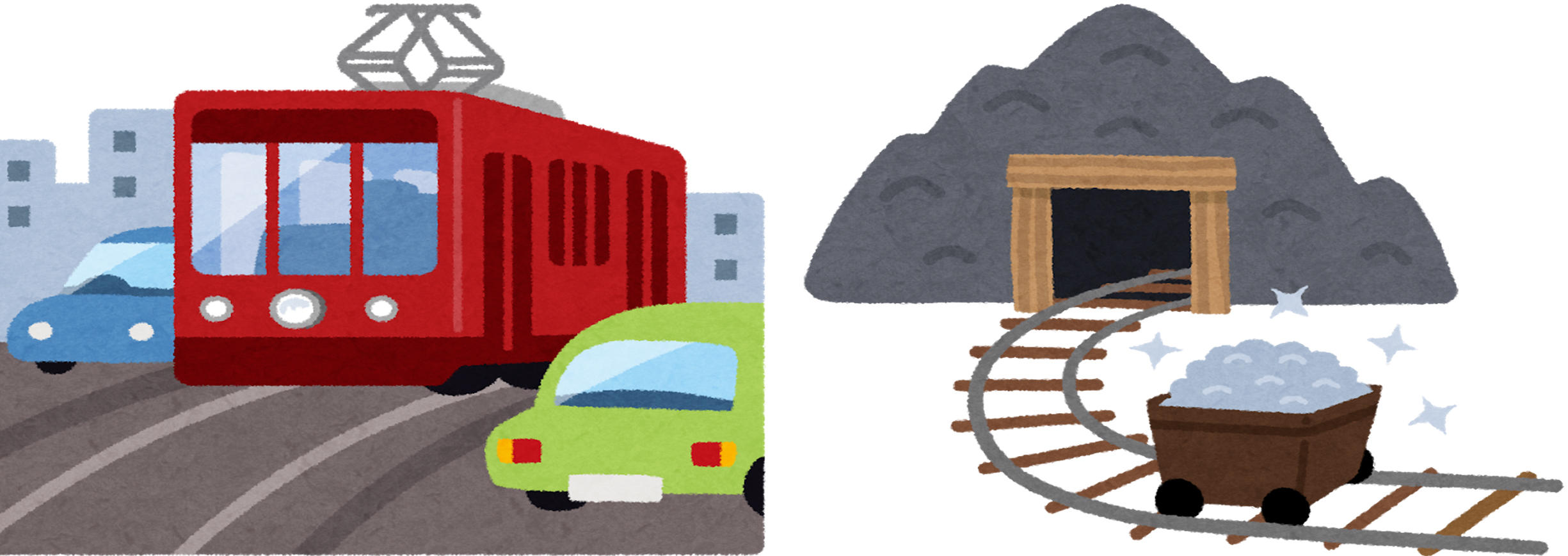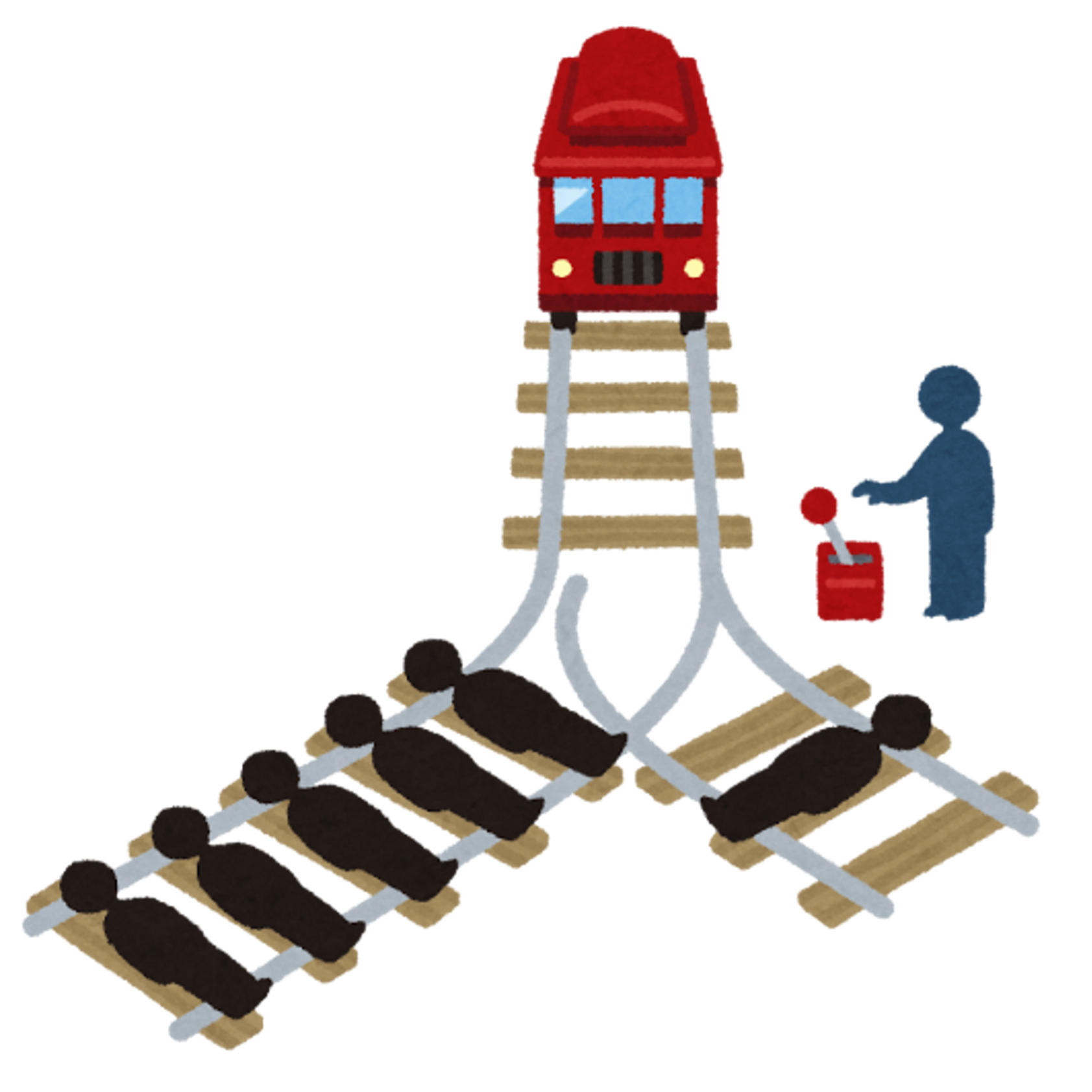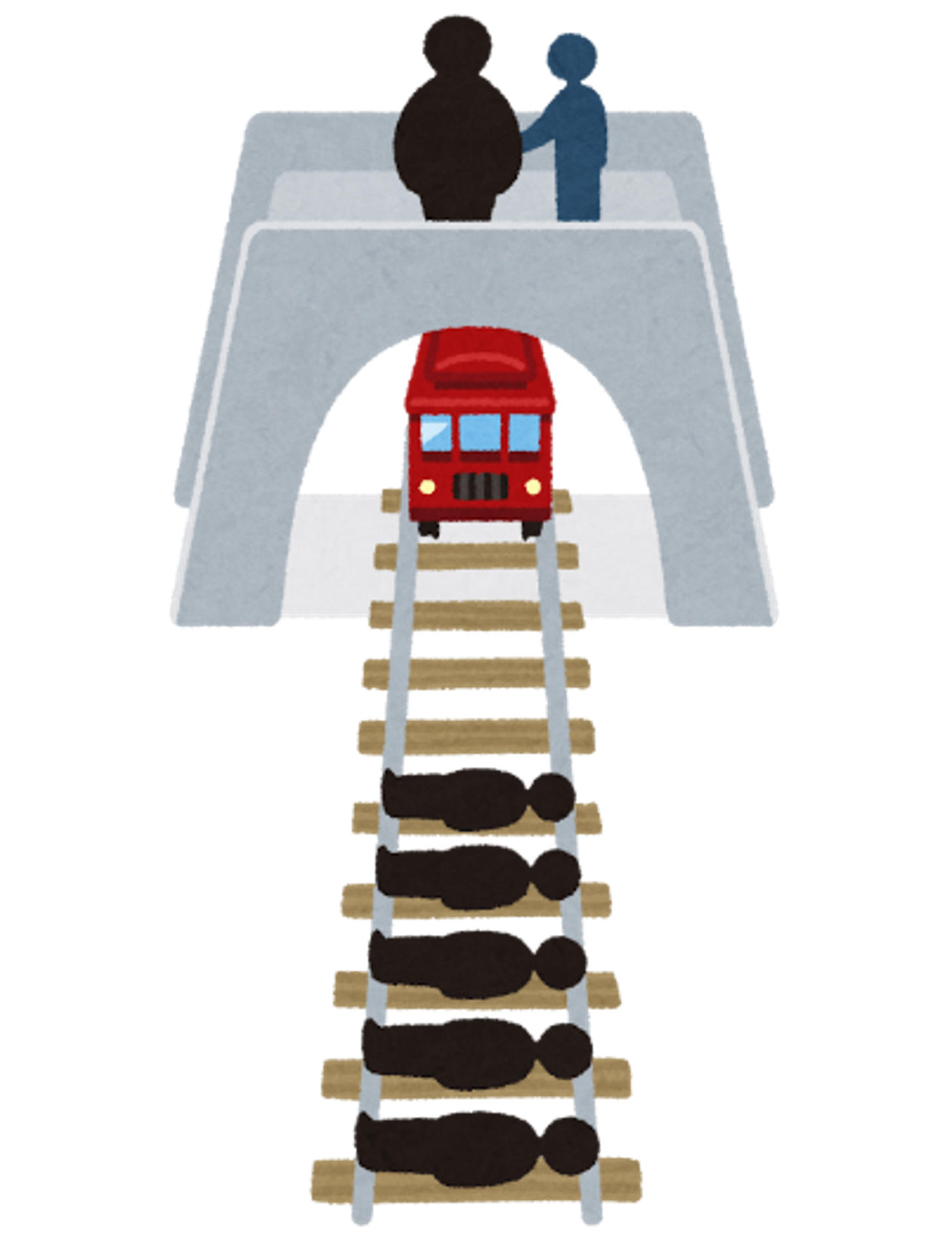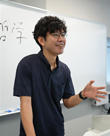Should We Sacrifice One Life to Save Five Lives?
Sohei Yajima/Associate Professor, Faculty of Global Informatics, Chuo University
Areas of Specialization: Philosophy and Ethics
1. The trolley problem
Many people are probably familiar with the thought experiment known as the trolley problem. In Japan, this problem is referred to as the "torokko" problem. The Japanese word "torokko" means a minecart (Figure 1), although the British philosopher Philippa Foot, who first formulated this thought experiment, used the British term "tram" (Foot 1967, p. 8).

Figure 1: A trolley or tram (left) and a torokko (right)
Anyway, I would like to begin this article with a brief explanation of the trolley problem. Imagine that you are standing in front of a railroad switch, and a trolley with a faulty brake is about to pass on the railway track in front of you. If you don't flip the switch, the trolley will continue on its current course and run over five people, whereas you can save those five people by flipping the switch. However, one person on the side track will be run over (Figure 2). Would you flip the switch in this case?

Figure 2: The railroad switch case
In the switch case, it is known that more people will choose to flip the switch rather than not. In other words, there are more people who choose to sacrifice one person in order to save five people.
Another well-known variation of the trolley problem is called the footbridge case. The case is like this. Imagine that you are standing on a footbridge, and a trolley with a faulty brake is about to pass underneath the footbridge. There is a physically large person standing right next to you. Unless you push that person onto the track, the trolley will continue on its way and run over five people. On the other hand, if you push the large person off the footbridge, that person will become a "human car stop." This will stop the trolley and save the five people, but the large person will die (Figure 3). In this situation, would you push the large person off the footbridge?

Figure 3: The footbridge case
Then, what about this situation? Actually, in this footbridge case, there are more people who do not push the large person off the footbridge than those who do. That is, contrary to the switch case, more people choose not to sacrifice one person in order to save five.
2. Is the difference in emotions?
Both the switch case and the footbridge case require the decision of whether or not to sacrifice one person in order to save five people. Then, what explains the difference in decisions in the two cases?
To answer this question, psychologist Joshua Greene used fMRI to examine brain activity in people when they faced the trolley problem and similar moral dilemmas (Greene et al. 2001). The results showed higher activities in areas of the brain involved in emotions in the footbridge case than in the switch case. In other words, the emotion that motivates people "not to kill a single person" was stronger in the footbridge case than in the switch case.
Greene explained the difference in emotional responses between the two cases as follows: in the history of human evolution, killing someone involved direct contact such as hitting, cutting, or stabbing; therefore, emotions that motivate people to refrain from killing have evolved to respond to cases involving such direct harm; however, sacrificing someone by flipping a switch does not involve such direct contact with that person; as a result, we do not experience an emotional response that causes us to refrain from killing; on the contrary, pushing someone off a footbridge requires such direct contact, so there is an emotional response and we refrain from pushing the person.
This explanation is probably wrong. For example, consider murder by indirect means that do not involve direct contact, such as poisoning. We would be reluctant to kill someone by poisoning them, just as we would be reluctant to kill someone by pushing them off a footbridge. Also, consider changing the switch case so that flipping the switch would kill one person, even though there is no one in the current path of the trolley. It is clear that we would be reluctant to engage in this simple act of murder. Nevertheless, let's accept Greene's explanation as correct for the moment. In that case, would it truly be ethically right to choose not to sacrifice one person and therefore not to save five people in the footbridge case?
3. Is utilitarianism rational?
Philosopher Peter Singer accepts Greene's explanation. However, Singer emphasizes that this explanation does not demonstrate the ethical righteousness of choosing not to sacrifice one person and not to save five people in the footbridge case (Singer 2011, pp. 194-196). This is because there is no logical justification for the ethical righteousness of our emotional response. Singer is an advocate of utilitarianism, which says that actions maximizing the happiness of society as a whole are good. Also, the eighteenth-nineteenth century philosopher Jeremy Bentham, who is known as the father of utilitarianism, made a similar point in opposition to the principle of "sympathy and antipathy" (Bentham 1996, p. 25).
As a utilitarian, Singer thinks that we should sacrifice one person to save five people in the footbridge case. We should make this decision despite our own emotional reactions, because this is the ethically right act that is rationally justified by the principle of utility (the utilitarian principle that actions maximizing the happiness of society as a whole are good). However, is this really the case? After all, the principle of utility adopted by Singer as the rational basis for ethics seems to be nothing more than an intuition. Indeed, Bentham and Singer seem to espouse the principle of utility precisely because they themselves are driven by an evolutionarily acquired altruistic intuition (or emotional reaction) that "it is better to help as many of our fellows as possible," and this intuition itself is not justified in any way.
4. Information and sympathy
Let's now turn to the reason why our emotional responses differ between the switch case and the footbridge case. I attribute this difference to the disparity between the two cases in the resolution or amount of information about a single victim. In the switch case, the only information given about the single person is the abstract location of the person i.e., on the side track. In contrast, in the footbridge case, the relatively specific information is given including the person's appearance and distance from you: a large person standing right next to you on the footbridge.
In this way, by gaining more information about a person, we are naturally able to sympathize with that person. This is obvious when we see how the development of information media, especially the Internet, in today's world has enabled us to sympathize with more people than ever before. If we can see that the emotional response of "I must not kill a single person" will occur only when we get a certain amount of information about that person and feel sympathy with them, then it is easy to explain the difference in the presence or absence of an emotional response between the switch case and the footbridge case.
To put this in another way, if we receive more information about one person in the switch case and feel sympathy with them, we will be more hesitant to sacrifice them to save the five people. In an experiment conducted in 2017 by Michael Stevens, who runs the YouTube channel named "Vsauce," subjects were shown a recorded video of five people and one person on a railroad track (i.e. their appearances), and were made to believe that the trolley problem (the switch case) was actually occurring (Stevens 2017). The subjects' choices were observed, and the experiment showed that only two out of seven people flipped the switch. Another study confirmed that people tend to be more hesitant to sacrifice one person on the side track if that person is close to them (Bleske-Rechek et al. 2010).
5. Conflicting intuitions
Given these, we can say that the essence of the trolley problem is a conflict of intuitions: one between the intuition that harming one person is bad, which is rooted in a strong emotional response, and the altruistic intuition that helping five people is good, which is likely rooted in a relatively weak emotional response. Due to the relative strength of the emotion, we tend to act on the former intuition. In contrast, Bentham and Singer probably recognize the privilege of rationality and ethical righteousness only in the latter intuition.
Actually, we cannot say which one of the intuitions is rational or which one is ethical. Rather, neither is rational and both are ethical. Neither is rational because intuitions cannot be derived logically. Both are ethical because without these intuitions of good and bad, we would have no ethics. In that sense, these intuitions themselves define our ethics.
Finally, should we sacrifice one life to save five lives? The answer, which may be disappointing, is that we cannot decide this from a purely ethical point of view. This is because saving five lives is ethically good and at the same time sacrificing one life is ethically bad. So, ethically speaking, we should save five lives and at the same time we should not sacrifice one life. Nevertheless, we could say, as a matter of fact, the strength of our emotional response tends to make us choose not to sacrifice one person.
*The image was borrowed from the website "Irasutoya - A collection of cute free materials" (https://www.irasutoya.com/).
<References>
- Bentham, J. (1996). An introduction to the principles of morals and legislation (J. H. Burns, H. L. A. Hart, & F. Rosen, Eds.). Clarendon Press. A Japanese translation by Gen Nakayama was published by Chikuma Shobo in 2022.
- Bleske-Rechek, A., Nelson, L. A., Baker, J. P., Remiker, M. W., & Brandt, S. J. (2010). Evolution and the trolley problem: People save five over one unless the one is young, genetically related, or a romantic partner. Journal of Social, Evolutionary & Cultural Psychology: JSEC, 4(3), 115-127.
- Foot, P. (1967). The problem of abortion and the doctrine of the double effect. Oxford Review, 5, 5-15.
- Greene, J. D., Sommerville, R. B., Nystrom, L. E., Darley, J. M., & Cohen, J. D. (2001). An fMRI investigation of emotional engagement in moral judgment. Science, 293(5537), 2105-2108.
- Singer, P. (2011). The Expanding Circle: Ethics, Evolution, and Moral Progress. Princeton University Press. My Japanese translation is forthcoming from Shobunsha in 2024 or 2025.
- Stevens, M. (2017, December 7). Mind Field S2 - The Greater Good (Episode 1). Vsauce. https://www.youtube.com/watch?v=1sl5KJ69qiA
Sohei Yajima/Associate Professor, Faculty of Global Informatics, Chuo University
Areas of Specialization: Philosophy and EthicsSohei Yajima was born in 1978 and from Kanagawa Prefecture, Japan. He graduated from the Faculty of Letters, the University of Tokyo in 2003. He completed the Master’s Program in the Graduate School of Humanities and Sociology, the University of Tokyo in 2007. He completed the Doctoral Program in the Graduate School of Humanities and Sociology, the University of Tokyo in 2016. He holds a Ph.D. in literature. His former positions include: Researcher in the Graduate School of Humanities and Sociology, the University of Tokyo, and Part-Time Lecturer in the Faculty of Law, Chuo University. He has been in his current position since 2019.
His research theme is to clarify what ethics/morality is from an evolutionary perspective.
His translations include a Japanese translation of The Expanding Circle: Ethics, Evolution, and Moral Progress, written by Peter Singer (Shobunsha, forthcoming in 2024 or 2025) and more.
His academic papers include “The Principle of Utility and Hume’s Law” (Rinrigaku Kiyo, Vol. 26, 2019) and more.









